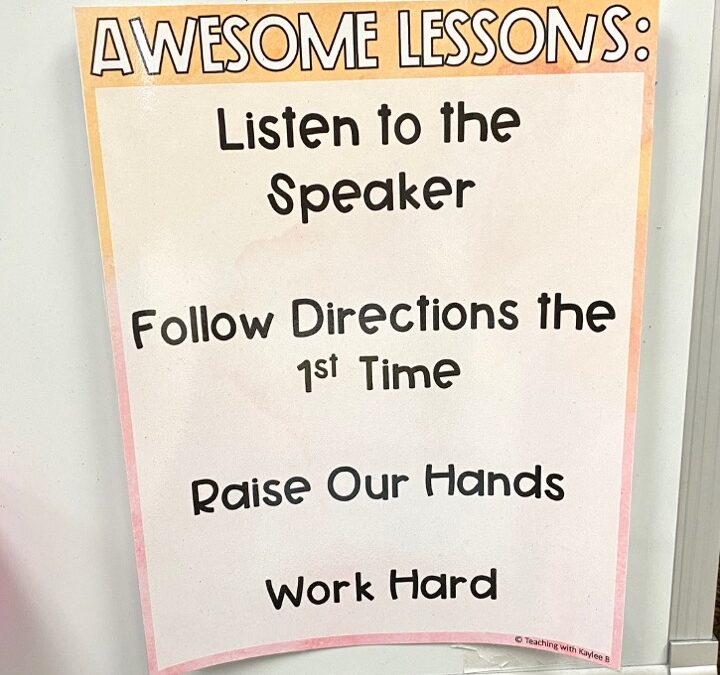When there is bad behavior in the classroom, it takes up instructional time and doesn’t make a good learning environment for students. Bad behavior wears teachers down and can make us feel burned out. That is why it is so important to have effective strategies for behavior management in your elementary classroom. When we have strategies for behavior management, we can choose the tools that will work for our class. Less instructional time is lost, and teachers and students are happier. Today I’m sharing the strategies for behavior management I use in my 2nd grade classroom.
Strategies for Behavior Management
Create Class Rules Together
When it comes to strategies for behavior management, students first need to know what is expected of them for behavior. I like to get students involved in this by creating a Class Agreement together. We read lots of picture books with good values like being kind or being respectful. We make a list to brainstorm values the class wants to live by.
Then we put them into categories and I type it up on a nice poster. Students write their name on the poster. When they do this, they are showing they agree to follow these rules or values.
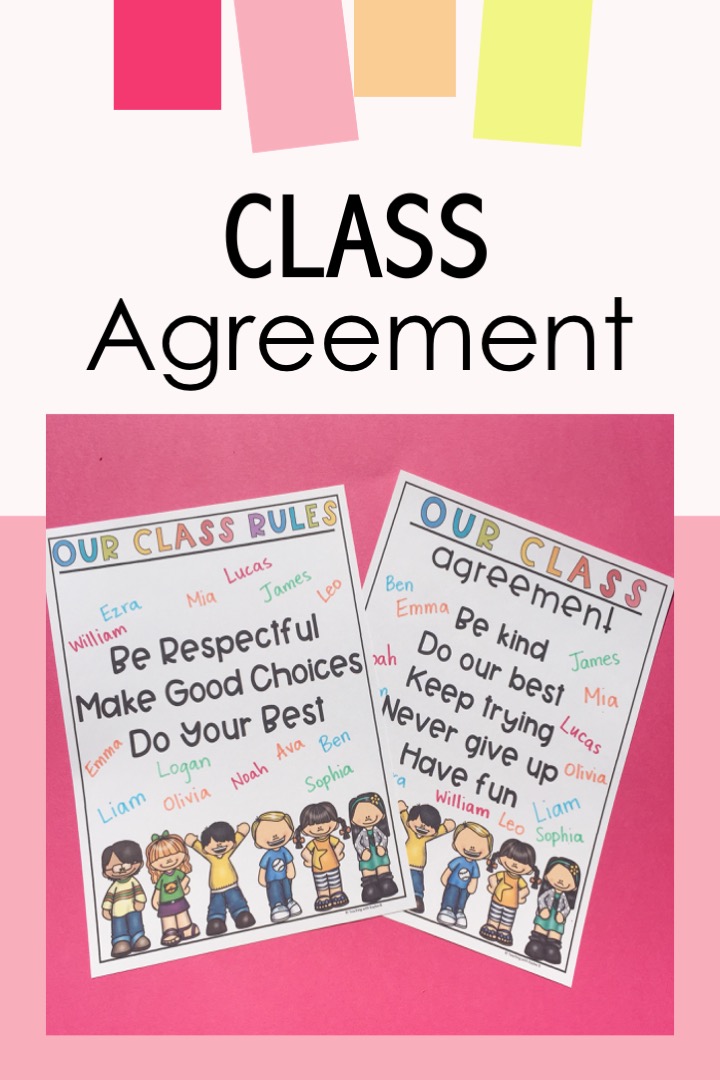
One of the best strategies for behavior management is to make a class agreement.
Students help make hand movements for each value. For example, for “Always Be Kind” students make a heart with their hands. We recite our Class Agreement every morning. It helps set the tone of what is expected behavior wise each day. Students are more likely to follow expectations and rules they have a part in making. Find this Class Agreement Template here.
Group Rewards
I love to see my class working together for positive behavior. One way I help students do this is with group rewards. Our desks are in rows in my classroom so we do row points. If I see all the students on task during a lesson, I’ll give them a point. The row with the most points at the end of the week gets a reward.
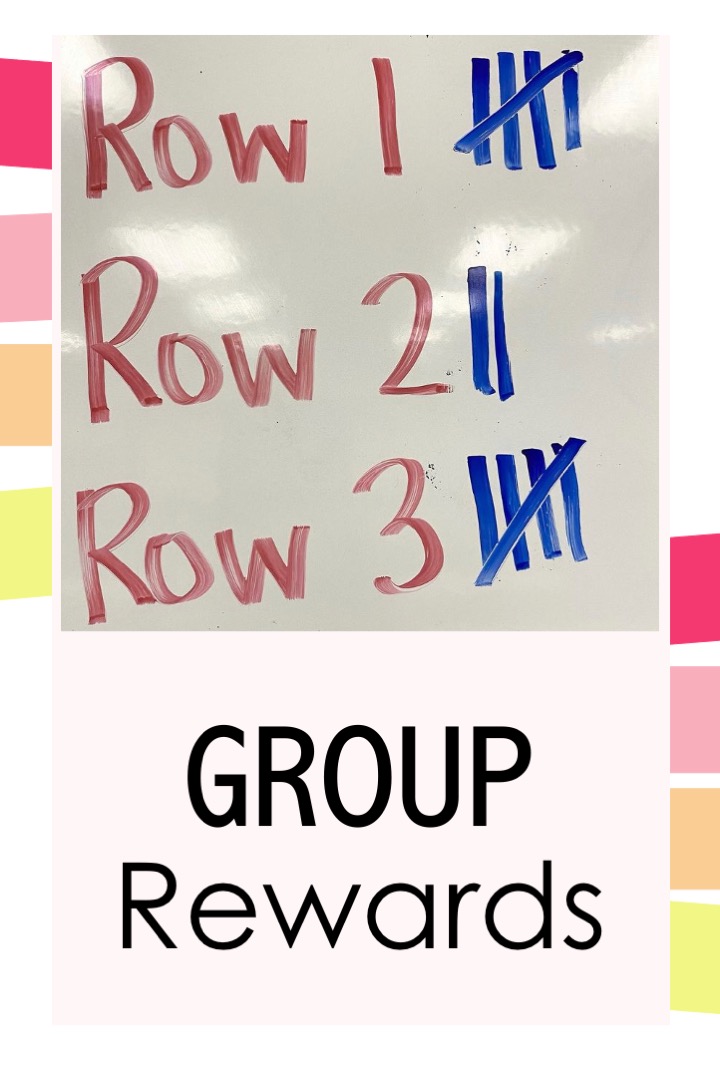
Having students work together is one of my favorite strategies for behavior management in the classroom.
My school has a ticket drawing on each Friday so I give each student in the winning row a ticket. But you could do a tootsie roll or something like that as well.
Individual Rewards
I also like to reward students’ individual good behavior. I give each student a “Good Choice Punch Card” to keep in their pencil box. When I see a student go above and beyond with kindness, keeping our classroom clean, or working hard, I will have them get out their punch card and I’ll give them a punch. When they fill out their punch card, they can pick from my Classroom Reward Coupons.
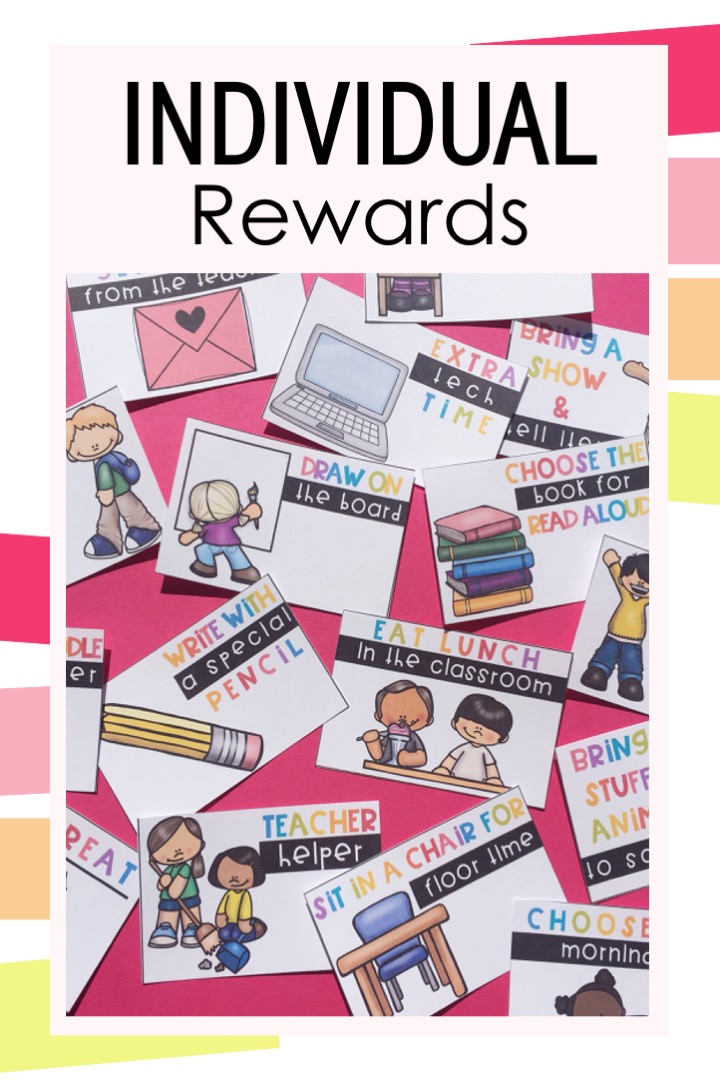
I love using positive strategies for behavior management!
These are fun rewards for students that don’t cost me anything. Things like sitting in the teacher’s chair for the day, or being the teacher’s helper, or getting to write with a pen. Students love these and they don’t cost me a lot of money. Find these Student Reward Coupons here.
Instructional Strategies for Behavior Management
Lesson Expectations and Rewards
For my lessons to go more smoothly, I like to set expectations and rewards for them. I list out things I expect from my students during lessons and post it on the whiteboard. These include: listen to the speaker, follow directions the first time, raise our hands, and work hard. After each lesson all ask students how we did on each of those things. If students did well, then I will add a petal to our class flower reward.
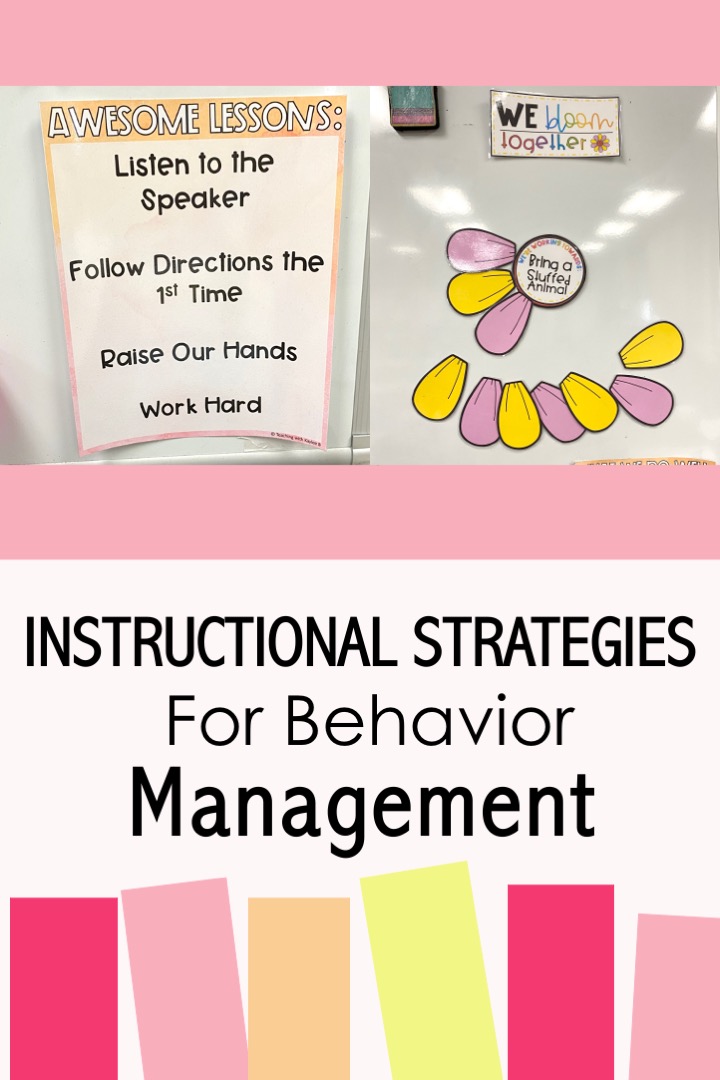
These instructional strategies for behavior management will help your lessons go more smoothly.
This is our Whole Class Rewards System. Students vote on a reward they want to work towards. Then when they fill up the flower with ten petals they earn a reward. I will also give petals when students get compliments from special teachers and when students do well during our centers time.
This Whole Class Reward System works really well to motivate students for good behavior. FInd it here. Learn more about how I use it here in this blog post: The Best Whole Class Rewards System Ever!
Fun Friday Time
This last strategy for behavior management is one of my favorites. On Fridays in my classroom we have Fun Friday. This is free time where students get to play with the toys we have in our classroom. I have blocks, legos, how to draw books, puzzles, and other fun games for students. If students finish all of their work throughout the week, they get to go do Fun Friday time right away. If students didn’t finish their work, they have to work on it during Fun Friday time. This really motivated students to work hard during the week.
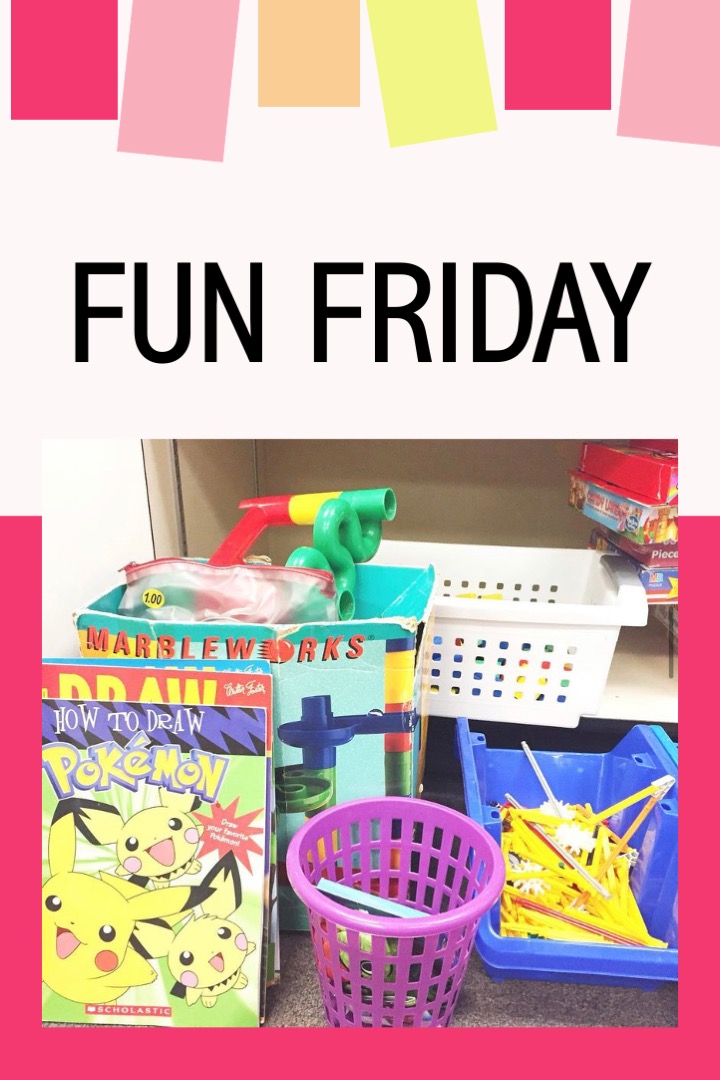
Fun Friday is a great way to help motivate students!
I also use Fun Friday to help students make transitions quickly throughout the week. When I need students to go back to their desks or get out supplies I’ll tell them they have a certain amount of seconds to do it. Then I will start counting down. If students do it in that time limit, I’ll give them some extra seconds to Fun Friday time. For example, I’ll write a +5 on the board. If students take more time to do the task, I’ll minus some Fun Friday time. At the end of the week, right before Fun Friday time, We will add up the numbers. They will earn extra Fun Friday time if they have positive numbers. If they have negative numbers, students put their heads down on their desks for that amount of seconds before we can start Fun Friday.
These strategies for behavior management are just tools in our teacher tool belt. Use the ones that your students need. When you get further on in the school year, maybe you need to add in more strategies to help the behaviors in your classroom. To save money with all of these behavior management tools, check out this bundle: Classroom Management Techniques
Looking for everything you need for Back to School? Check out this bundle where you get all of my classroom management tools plus other back to school essential in this Back to School Mega Bundle here.

